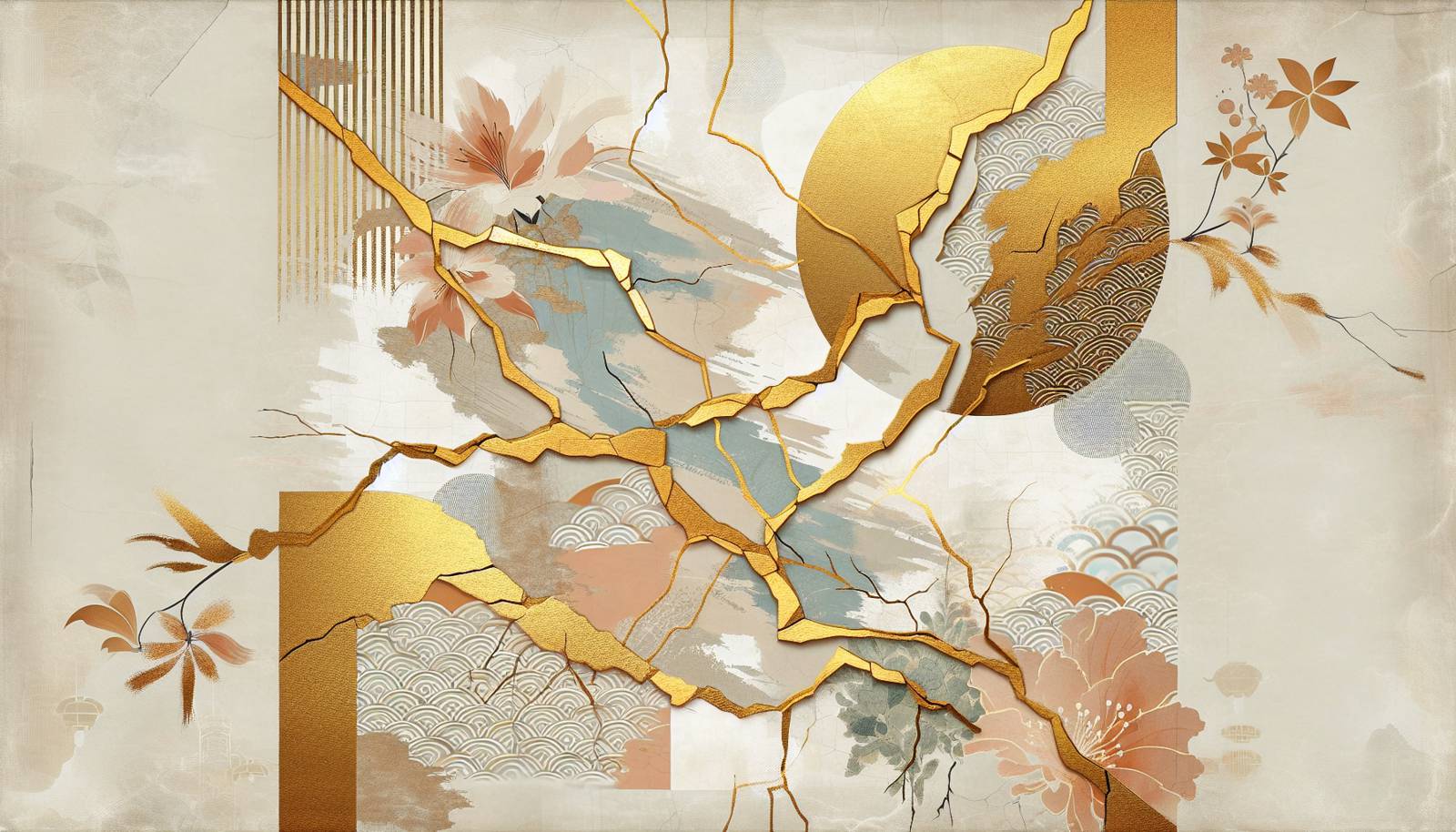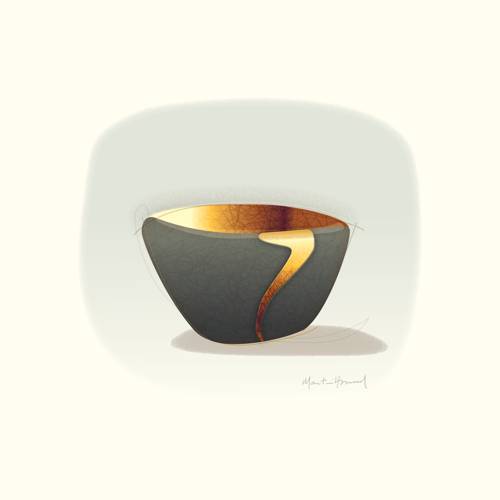
FAQ About Cultural Significance of Traditional Japanese Kintsugi

What is Kintsugi and where did it originate?
Kintsugi is a traditional Japanese art form that involves repairing broken pottery with lacquer mixed with powdered gold, silver, or platinum. The practice originated in Japan during the late 15th century as a way to repair and enhance the appearance of damaged pottery. The philosophy behind kintsugi is deeply rooted in the Japanese concept of 'wabi-sabi,' which finds beauty in imperfection and impermanence.

Why is Kintsugi considered a philosophy as well as an art?
Kintsugi is considered a philosophy because it embodies the Japanese principle of 'wabi-sabi,' celebrating the beauty of flaws and transience. This art form not only repairs physical objects but also represents a way of thinking that values the history and imperfections of an item, encouraging resilience and acceptance. It teaches people to embrace their scars, both physical and metaphorical, honoring the journey rather than focusing solely on the end product.

How does Kintsugi reflect Japanese values and culture?
Kintsugi reflects Japanese values such as resilience, acceptance of imperfections, and a deep appreciation for history and tradition. In Japanese culture, there is an emphasis on harmony and balance, and kintsugi exemplifies these by turning brokenness into beauty. The philosophy behind it aligns with the Zen Buddhist concepts of anti-excess and reverence for the simple and unadorned, making it a profound cultural touchstone in Japan.

What materials are used in the Kintsugi process?
The materials used in the kintsugi process typically include urushi (a special lacquer), which is mixed with gold, silver, or platinum dust to create a shimmering effect. Urushi is harvested from the sap of the urushi tree and is a crucial element for its adhesive and durable properties. The metallic powders are used to highlight the repaired areas, transforming the object's flaws into its focal points.

Is Kintsugi used for all types of pottery?
Kintsugi is primarily used for repairing ceramics such as bowls, plates, and vases. However, the technique can be applied to almost any ceramic object, regardless of size or function. While traditionally it has been associated with high-quality pottery, today artists employ kintsugi techniques in a wide range of art and craft projects.

Can Kintsugi be applied to materials other than pottery?
While traditionally used on ceramics, the principles of kintsugi can inspire repair techniques in other materials like glass or wood, albeit with some modifications to materials and methods. The broader philosophy of valuing imperfection can be applied to many art forms and crafts, encouraging a mindset of mending rather than discarding.

How long does it typically take to complete a Kintsugi repair?
The kintsugi repair process can vary in duration depending on the complexity of the break and the number of pieces involved. On average, it might take several weeks to ensure proper adhesion and curing of the lacquer. Each step in the process, from cleaning the pieces to applying the lacquer and metallic powders, requires careful attention and ample drying time to achieve optimal results.

Is Kintsugi practiced outside of Japan?
Yes, kintsugi has gained international popularity and is practiced by artists and hobbyists around the world. Its philosophy of embracing imperfections resonates with many people across different cultures, leading to workshops, classes, and online tutorials that teach the technique. This global interest has also inspired modern interpretations and adaptations of the traditional craft.

In what ways has Kintsugi influenced modern art and design?
Kintsugi has influenced modern art and design by promoting the value of imperfections and encouraging artists to explore mending and transformation in their works. It has inspired movements towards sustainability and upcycling, as people are drawn to the idea of fixing and enhancing rather than discarding. Additionally, the distinctive aesthetic of kintsugi has been incorporated into contemporary fashion, jewelry, and interior design.

What are some common misconceptions about Kintsugi?
A common misconception about kintsugi is that it is merely a repair technique. While it does involve repairing broken objects, its deeper significance lies in its philosophical underpinnings, which emphasize the beauty and value of imperfections. Another misconception is that genuine kintsugi should always use real gold; however, variations exist using different materials, allowing the practice to be more accessible while still honoring its spirit.

Can anyone learn to perform Kintsugi, or does it require special skills?
While kintsugi is a delicate art form that requires some level of skill and patience, it is accessible to beginners willing to learn. With tools and materials now widely available, many people can practice kintsugi by following online tutorials, attending workshops, or learning from traditional practitioners. Mastery takes time, but fundamentals can be grasped relatively quickly under proper guidance.

What is the symbolic meaning of Kintsugi in a broader context?
Kintsugi symbolizes recovery and transformation, conveying the idea that broken objects, much like human beings, can heal and become more beautiful through their scars. This metaphor extends to life experiences, where challenges and imperfections contribute to personal growth and resilience. It encourages a positive perspective on life's tribulations, seeing them as opportunities for embellishment and renewal rather than flaws.

How does Kintsugi relate to the concept of Wabi-Sabi?
Kintsugi embodies the concept of wabi-sabi by embracing the beauty of imperfection and transience. Wabi-sabi is a Japanese aesthetic philosophy that finds value and beauty in the imperfect, incomplete, and transient. Kintsugi demonstrates this by acknowledging the cracks and repairs in an object not as faults to be concealed, but as features to be celebrated.

Are there modern alternatives to traditional Kintsugi materials and methods?
Modern alternates to traditional kintsugi materials include using synthetic adhesives and commercially available metal powders or paints as more accessible options. While these alternatives may lack the authenticity of traditional materials, they offer a way for more people to engage with the philosophy of kintsugi. It's a flexible craft that allows innovation while respecting traditional principles.

How does Kintsugi influence consumer attitudes towards sustainability?
Kintsugi influences consumer attitudes by promoting repair and reuse over disposal, aligning with sustainable practices. Its philosophy encourages people to value age and use, potentially reducing waste and consumerism. By celebrating the life story of a product, kintsugi fosters a mindset that appreciates longevity and resilience, contributing to more sustainable consumption habits.

What impact does Kintsugi have on mental well-being and psychological resilience?
Kintsugi can positively impact mental well-being by fostering psychological resilience and acceptance of imperfection. It encourages individuals to view their challenges and 'breaks' as opportunities for growth and transformation. This mindset can lead to improved self-esteem and a more compassionate view of one's own perceived flaws and life experiences.

Does the practice of Kintsugi differ across regions in Japan?
While the foundational concepts of kintsugi are consistent throughout Japan, regional variations can exist, influenced by local cultural practices, materials, and artistic sensibilities. These variations typically involve different stylistic preferences or the use of locally sourced materials, reflecting the diverse cultural tapestry of Japan.

Is there a connection between Kintsugi and Zen Buddhism?
Yes, kintsugi is closely connected to Zen Buddhism through its shared emphasis on acceptance, imperfection, and mindfulness. Both philosophies stress the importance of embracing life's impermanence and finding beauty in simplicity and natural state. The meditative and considered approach required in kintsugi aligns with Zen practices, promoting inner peace and focus.

How has the global perception of Kintsugi evolved over time?
The global perception of kintsugi has evolved from a niche traditional craft to a widely appreciated cultural phenomenon. As global interest in mindfulness and sustainability grows, kintsugi is increasingly seen not only as an art form but as a powerful metaphor for resilience and beauty in imperfection, capturing the imagination of a diverse audience.

What challenges might arise in practicing Kintsugi today?
Practicing kintsugi today can present challenges such as sourcing authentic materials like urushi, and proper techniques need time and patience to master. Additionally, maintaining the cultural integrity of kintsugi in a modern context can be challenging, as there's a risk of oversimplification or commercialization that might detract from its philosophical depth.
